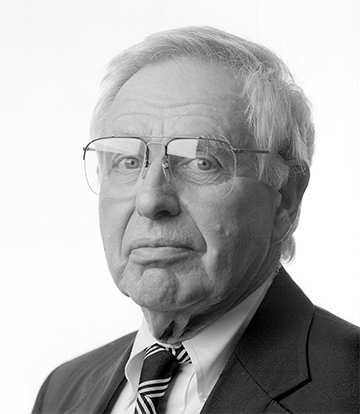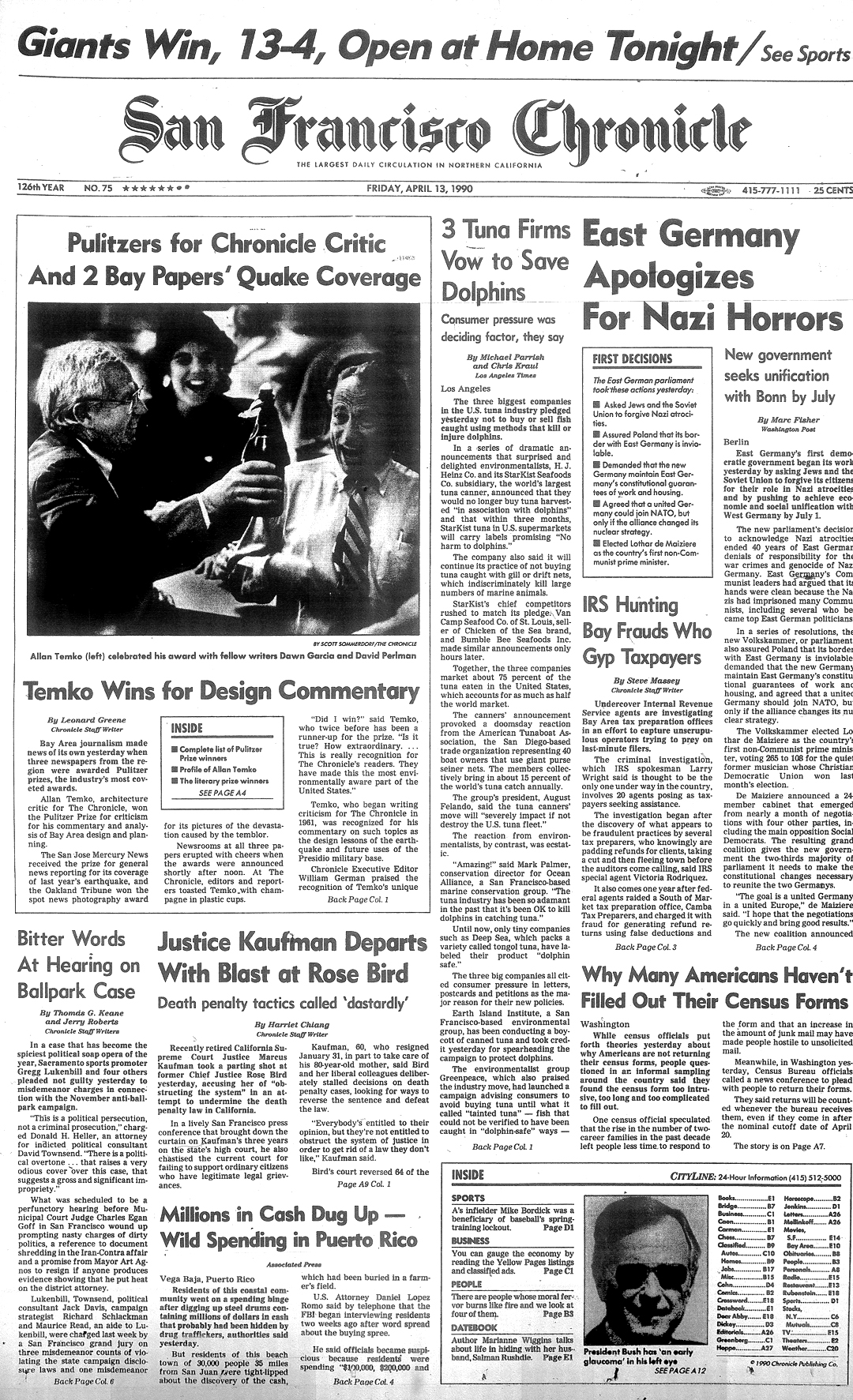
Temko Wins for Design Commentary
By Leonard Greene
San Francisco Chronicle Staff Writer
April 13, 1990
Bay Area journalism made news of its own yesterday when three newspapers from the region were awarded Pulitzer prizes, the industry’s most coveted awards.
Allen Temko, architecture critic for The Chronicle, won the Pulitzer Prize for criticism for his commentary and analysis of Bay Area design and planning.
The San Jose Mercury News received the prize for general news reporting for its coverage of last year’s earthquake, and the Oakland Tribune won the spot news photography award for its pictures of the devastation caused by the temblor.
Newsrooms at all three papers erupted with cheers when the awards were announced shortly after noon. At The Chronicle, editors and reporters toasted Temko with champagne in plastic cups.
“Did I win?” said Temko, who twice before has been a runner-up for the prize. “Is it true? How extraordinary. … This is really recognition for The Chronicle’s readers. They have made this the most environmentally award part of the United States.”
Temko, who began writing criticism for The Chronicle in 1961, was recognized for his commentary on such topics as the design lessons of the earthquake and future uses of the Presidio military base.
Chronicle Executive Editor William German praised the recognition of Temko’s unique achievements as the arbiter of the Bay Area’s urban environment.
“No one in journalism has had a greater influence on the physical well-being of this region than Allan Temko,” German said. “From the soaring architecture of St. Mary’s Cathedral to the practical efficiency of our bridge toll booths, Temko’s writing has been a motivating force.”
The Chronicle has won three previous Pulitzer prizes. The last one came in 1952, when Chronicle reporter George de Carvalho won the Pulitzer for local reporting for a series of stories on a Communist Chinese ransom racket.
The late Chronicle columnist Stanton Delaplane won a Pulitzer in 1942 for his coverage as a reporter of the attempt by five California and Oregon counties to secede and form the State of Jefferson. And in 1934, Chronicle reporter Royce Bier (sic) received the prize for his dramatic coverage of the lynching of two kidnapers in San Jose.
 At the Mercury News, staff members responded to word of the prize yesterday by throwing several editors into a pond outside the newspaper building.
At the Mercury News, staff members responded to word of the prize yesterday by throwing several editors into a pond outside the newspaper building.
“It’s quite an honor for the entire staff, and I mean even beyond the newsroom,” said Executive Editor Bob Ingle of the award for the paper’s earthquake coverage. “It’s times like that when people truly need a newspaper.”
“We were lucky. We had enough power, and we planned those 12 open pages for a World Series coverage,” he said, recalling the scene as the earthquake struck just before the start of the third game of the World Series at San Francisco’s Candlestick Park.
At the Tribune, which experienced a change of ownership in 1983 amid financial hard times, editors and staffers said the award shows how far the newspaper has progressed.
“We’re elated,” said Tribune Editor and President Robert Maynard. “Seven years of hard work to rebuild this newspaper has been vindicated.”
He said workers from every department jammed into the Tribune’s newsroom to share in the moment. He said more people walked away wearing champagne than swallowing it.
Each of the Pulitzer prizes – 14 in journalism and seven in the arts – brings with it a $3,000 prize, except for the public service award, which carries a gold medal. The prizes have been awarded since 1917.
For the first time in 23 years, the Pulitzer board named two winners for the public service award. The gold medals went to the Washington (N.C.) Daily News, for a series showing that city officials had failed to disclose the presence of carcinogens in the water supply, and to the Philadelphia Inquirer, for stories on the lack of regulation in the American blood bank business.
It was the Inquirer’s 17th Pulitizer Prize, all won in the past 15 years, and the sixth straight year the newspaper has won an award.
